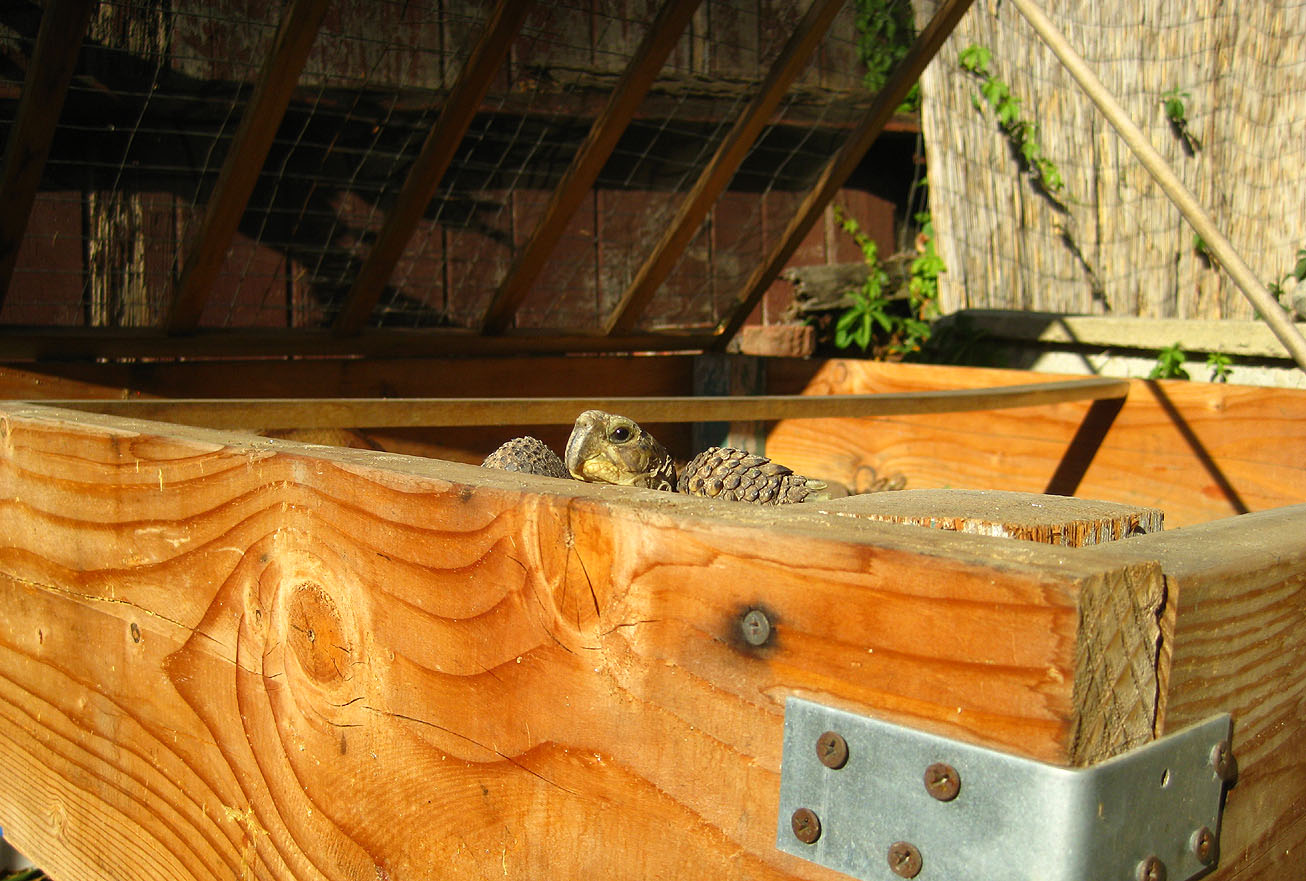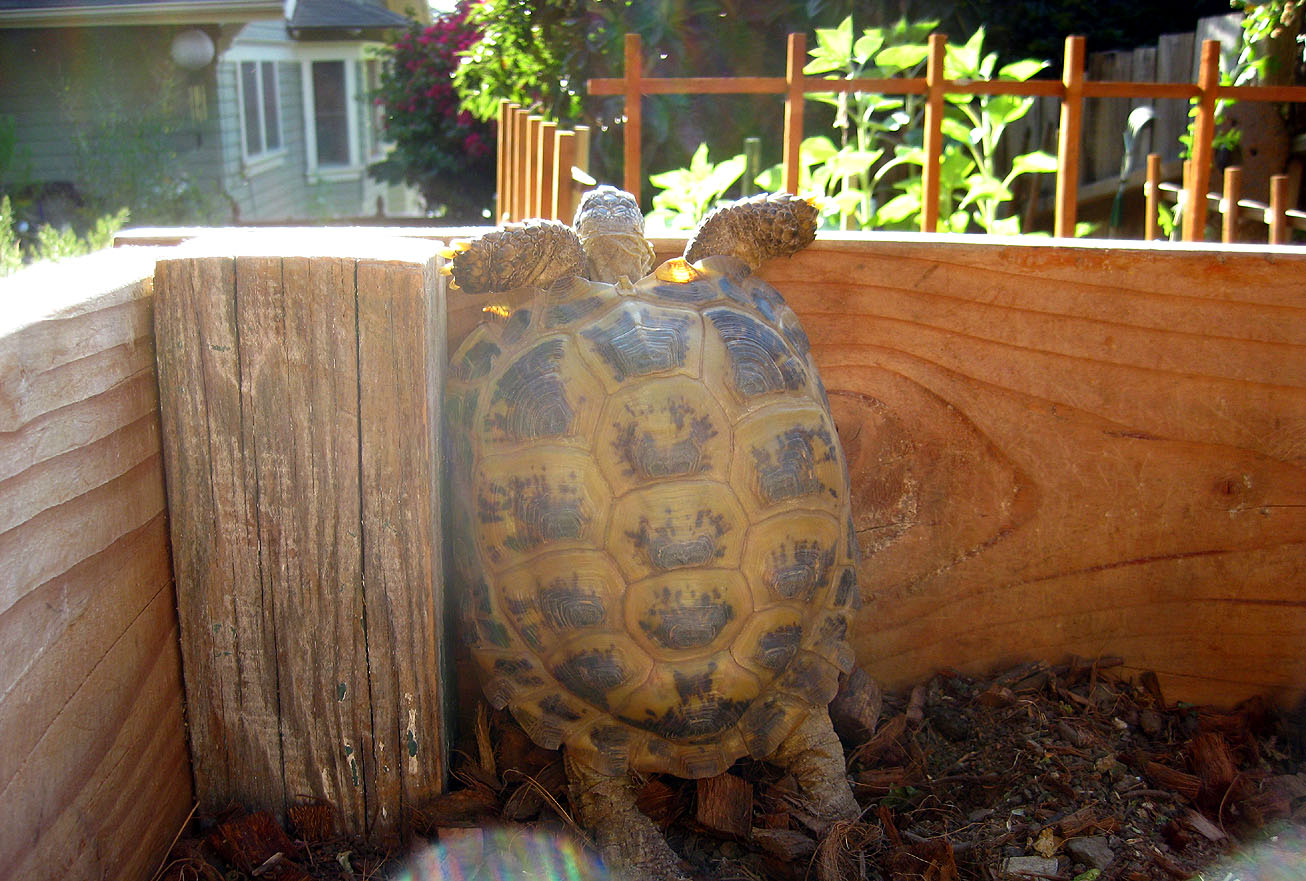All our animals are rescues in one way or another, whether we found them or they found us, our menagerie is all a matter of crucial timing and/or serendipity — and that includes our Russian tortoise Buster who my mother basically unearthed whiled gardening in the yard of her Sherman Oaks home back in October 2001 when the Buster wasn’t more than a year or two old and not much more than the circumference of a tennis ball… with legs, head and a tail.
Until a year ago last month, Buster lived in a succession of incrementally larger aquariums, the largest being 3 square feet. Even if it were triple that size, see-through barriers are pretty much the worst way to keep a tortoise contained because there’s little in their genetic coding spanning the hundreds of millions of years that they’ve roamed the earth allowing them to understand what glass is. To them it’s just something to incessantly bump up against trying to get to the over there beyond it.
I always knew this, but a combination of lack of space, materials, and motivation over the years precluded me from rectifying the situation — until June 2008, when I finally sketched out a hutch, bought the materials and built a 25-square-foot pen that Buster’s long deserved.
As you can see in the photo of Buster peeking out above the wall: it’s not enough (click for the bigger picture):
I don’t take it personally. The simple truth is that Russian tortoises are natural explorers and you can’t blame ’em when they can poke their head out of their house and see a great big world full of sunshine and sunflowers and patches of grass and even bigger patches of dirt and all sorts of things to check out. Here’s the view from the other side:
Of course, I took her out for some exercise and kept an eye on her as she did a wide-eyed loop of the backyard, eventually ending up right back at her hutch. She hissed when IÂ picked her up and put her back in it and battened it down, but she also wasted no time going back to her favorite familiar corner and tucking in for a nap.


 Follow
Follow